Related Research Articles
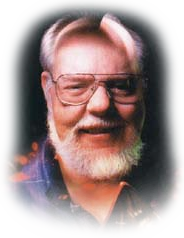
David Lance Arneson was an American game designer best known for co-developing the first published role-playing game (RPG), Dungeons & Dragons, with Gary Gygax, in the early 1970s. Arneson's early work was fundamental to the role-playing game (RPG) genre, pioneering devices now considered to be archetypical, such as cooperative play to develop a storyline instead of individual competitive play to "win" and adventuring in dungeon, town, and wilderness settings as presented by a neutral judge who doubles as the voice and consciousness of all characters aside from the player characters.

Blackmoor is a fantasy role-playing game campaign setting generally associated with the game Dungeons & Dragons. It originated in the early 1970s as the personal setting of Dave Arneson, the co-creator of Dungeons & Dragons, as an early testing ground for what would become D&D.

An adventure is a playable scenario in a tabletop role-playing game. These can be constructed by gamemasters for their players, and are also released by game publishers as pre-made adventure modules. Different types of designs exist, including linear adventures, where players move between scenes in a predetermined order; non-linear adventures, where scenes can go in multiple directions; and solo adventures, which are played alone, without a game group.

The history of role-playing games began when disparate traditions of historical reenactment, improvisational theatre, and parlour games combined with the rulesets of fantasy wargames in the 1970s to give rise to tabletop role-playing games (TTRPGs). Multiple TTRPGs were produced between the 1970s and early 1990s. In the 1990s, TTRPGs faced a decline in popularity. Indie role-playing game design communities arose on the internet in the early 2000s and introduced new ideas. In the late 2010s and early 2020s, TTRPGs experienced renewed popularity due to videoconferencing, the rise of actual play, and online marketplaces.
The monk is a playable character class in most editions of the Dungeons & Dragons fantasy role-playing game. A D&D monk is a fantasy martial artist, specializing in unarmed combat.
David Wesely is an American wargamer, board game designer, and video game developer. Wesely's developments, inspired by Kriegsspiel wargames, were important and influential in the early history of role-playing games.
The Midwest Military Simulation Association (MMSA) is a group of wargamers and military figurine collectors active during the late 1960s and 1970s.

Robert J. Kuntz is a game designer and author of role-playing game publications. He is best known for his contributions to various Dungeons & Dragons-related materials.

An adventure board game is a board game in which a player plays as a unique individual character that improves through gameplay. This improvement is commonly reflected in terms of increasing character attributes, but also in receiving new abilities or equipment.
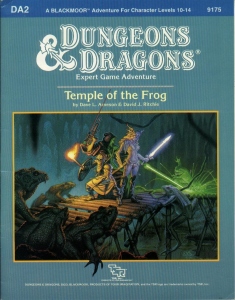
Temple of the Frog (ISBN 0-88038-317-8) is a 48-page 1986 adventure module for the Dungeons & Dragons roleplaying game. Its module code is DA2 and its TSR product code is TSR 9175. Another version of it was originally released in 1975 as part of the Blackmoor supplement.

City of the Gods is a 1987 adventure module for the Dungeons & Dragons role-playing game. Its module code is DA3 and its TSR product code is TSR 9191.

Powers & Perils (P&P) is a fantasy role-playing game published by Avalon Hill in 1984. The highly complex game was Avalon Hill's first foray into the role-playing game market, and proved to be a commercial failure.

The original Dungeons & Dragons boxed set by Gary Gygax and Dave Arneson was published by Tactical Studies Rules in 1974. It included the original edition of the Dungeons & Dragons fantasy role-playing game. Its product designation was TSR 2002.

Blackmoor is a supplementary rulebook of the original edition of the Dungeons & Dragons fantasy role-playing game written by Dave Arneson.
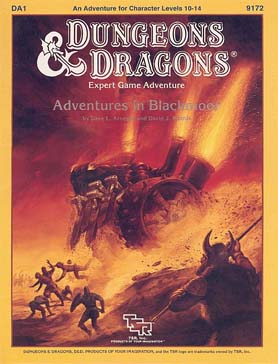
Adventures in Blackmoor is a 64-page Dungeons & Dragons fantasy role-playing game adventure, designed to be compatible with the Dungeons & Dragons Expert Set.

The DA module series is a series of four adventures for the Dungeons & Dragons role-playing game, designed to be compatible with the Dungeons & Dragons Expert Set. They were written for character levels 10–14 by Dave Arneson and David J. Ritchie and published from 1986 to 1987.
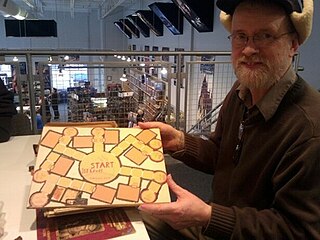
David R. Megarry is a game designer most notable for the board game Dungeon!.
Richard Leonard Snider was a game designer who worked primarily on role-playing games.
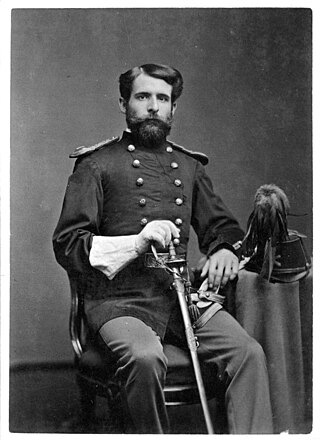
Strategos is a military wargame developed by Charles A. L. Totten for the United States Army, and published in 1880.
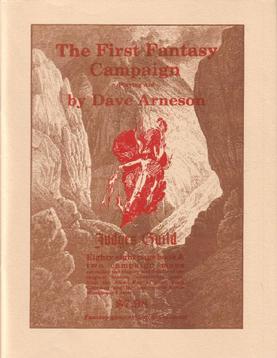
The First Fantasy Campaign is a supplement for fantasy role-playing games written by Dave Arneson and published by Judges Guild in 1977.
References
- 1 2 3 4 5 6 7 8 9 Tresca, Michael J. (2010), The Evolution of Fantasy Role-Playing Games, McFarland, pp. 60–61, ISBN 078645895X
- 1 2 3 Morgan, Griffith (Director) (Aug 18, 2019). The Secrets of Blackmoor (Motion picture). Minnesota: The Fellowship of the Thing.
- ↑ Schick, Lawrence (1991). Heroic Worlds: A History and Guide to Role-Playing Games. Prometheus Books. pp. 17–18. ISBN 0-87975-653-5.
- 1 2 Shannon Appelcline (2011). Designers & Dragons. Mongoose Publishing. p. 6. ISBN 978-1-907702-58-7.
- ↑ Arneson, David L. (April 1971). "The Saga of El Pauncho". Corner of The Table. Vol. 3, no. 4. Minneapolis, Minnesota: MMSA.
- ↑ Ewalt, David M. (2013). Of Dice and Men: The Story of Dungeons & Dragons and the People Who Play It. Scribner. p. 59. ISBN 978-1-4516-4052-6.
- 1 2 Reagan, Mike; Kahn, Harold, eds. (April 1981). "An Interview With Dave Arneson". Pegasus . No. 1. Decatur, IL: Judges Guild.
- ↑ Zegal, José; Deterding, Sebastian (2018). "Precursors". Role-playing Game Studies: Transmedia Foundations. Routledge.